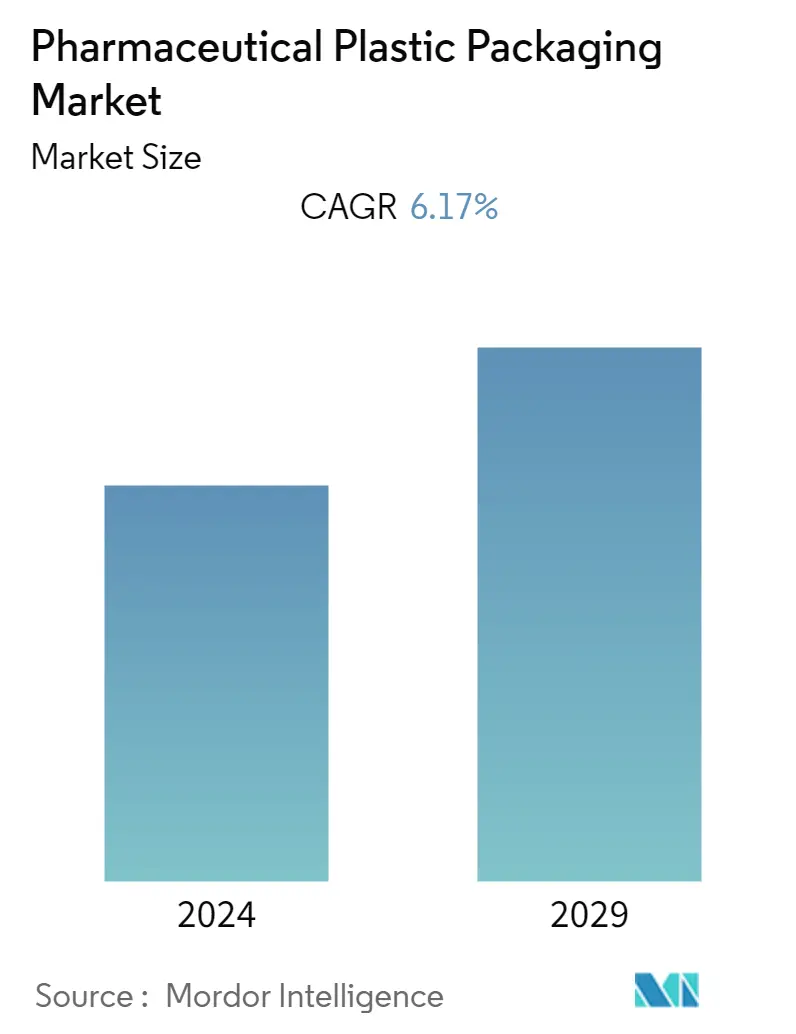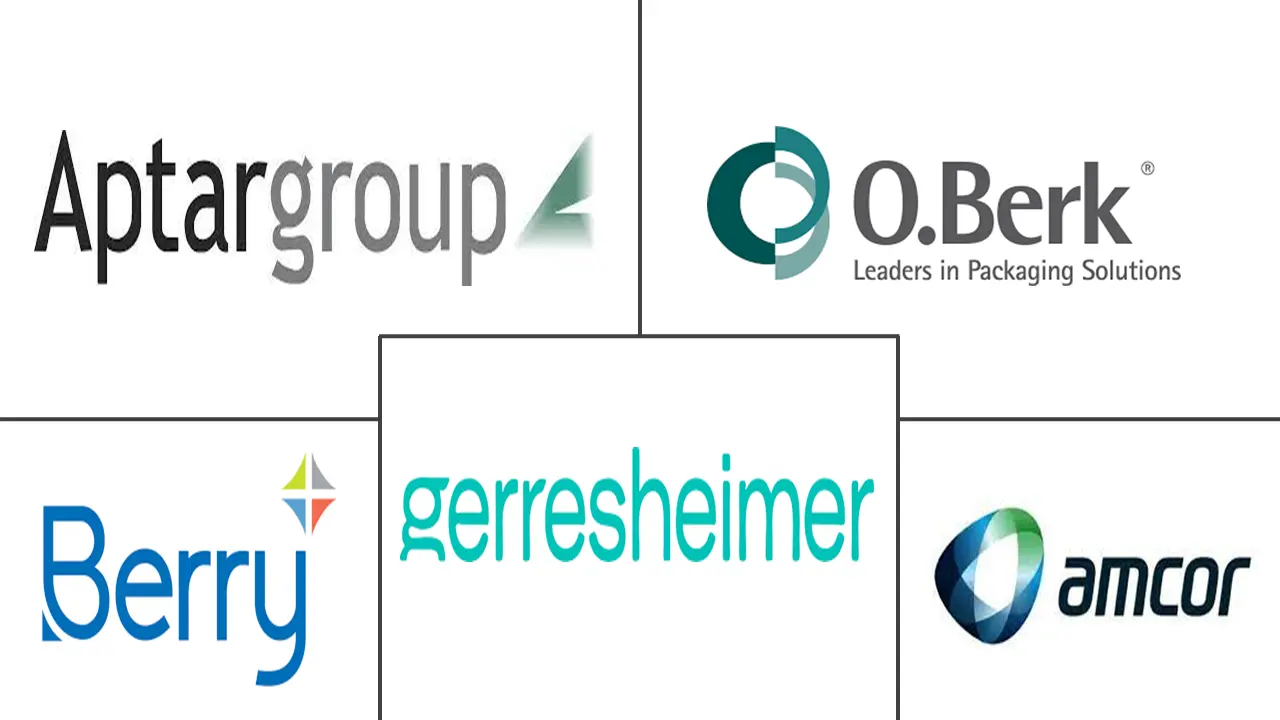Market Size of Pharmaceutical Plastic Packaging Industry

| Study Period | 2019 - 2029 |
| Base Year For Estimation | 2023 |
| CAGR | 6.17 % |
| Fastest Growing Market | Asia Pacific |
| Largest Market | North America |
| Market Concentration | Low |
Major Players
*Disclaimer: Major Players sorted in no particular order |
Need a report that reflects how COVID-19 has impacted this market and its growth?
Pharmaceutical Plastic Packaging Market Analysis
The pharmaceutical plastic packaging market was valued at USD 45.07 billion in the previous year and is expected to record a CAGR of 6.17%, reaching USD 65.63 billion by the next five years. The industry's demand for pharmaceutical plastic packaging has risen significantly due to some features that have led to increased acceptance of plastic in the industry, including moisture resistance, high impact strength and sturdiness compared to glass, tamper-proof, resistance to elongation, low water absorption, transparency, and extended shelf life.
- The pharmaceutical plastic packaging industry is growing worldwide, creating a need for packaging to treat communicable and non-communicable diseases. Therefore, there is an increasing need for packaging in pharmaceutical manufacturing to protect pharmaceuticals from damage, biological contamination, and external influences.
- Increased demand for pharmaceuticals is associated with technological advancements in the industry and translates directly into demand for bottles, vials, and other packaging solutions. Additionally, rising demand for injectables is driving the growth of plastic packaging in the industry. Strong demand for oncology drugs and other high-potency drugs (such as antibody conjugates and fast-acting steroids) and increasing per capita drug spending are likely to be the key growth drivers.
- Rigid plastic packaging is a type of plastic packaging that is strong and durable compared to flexible packaging. It is typically used for products that require extra protection and need to maintain their shape during the shipping process. Examples include pharmaceutical packaging for drops, inhalers, bottles, prefilled polymer syringes, and ampoules. Plastic packaging is increasing in demand owing to its superior shelf life, lightweight, cost efficiency, and ability to preserve freshness and reduce waste. In addition, it can be easily adapted to different shapes and sizes and tailored to specific brand needs.
- Due to their negative environmental impact, governments and regulatory bodies introduce bans or restrictions on several specific types of plastics used for pharmaceutical packagings, such as single-use plastics or certain non-recycled plastics. Such restrictions limit the alternatives available for pharmaceutical packaging, potentially reducing the demand for plastic packaging products. Handling and recycling medical wastes require additional steps and add to the cost of recycling. The segregation of different polymer-based products is also a challenge due to stringent regulations in handling them.
- The industry had a significant increase in demand during the COVID-19 pandemic. The impact of COVID-19 on the pharmaceutical plastic packaging industry has been mixed, but the surge in demand for medicine and vaccine distribution has driven packaging. However, supply chain disruptions and growing health and safety concerns created unprecedented obstacles for pharmaceutical packaging companies.
